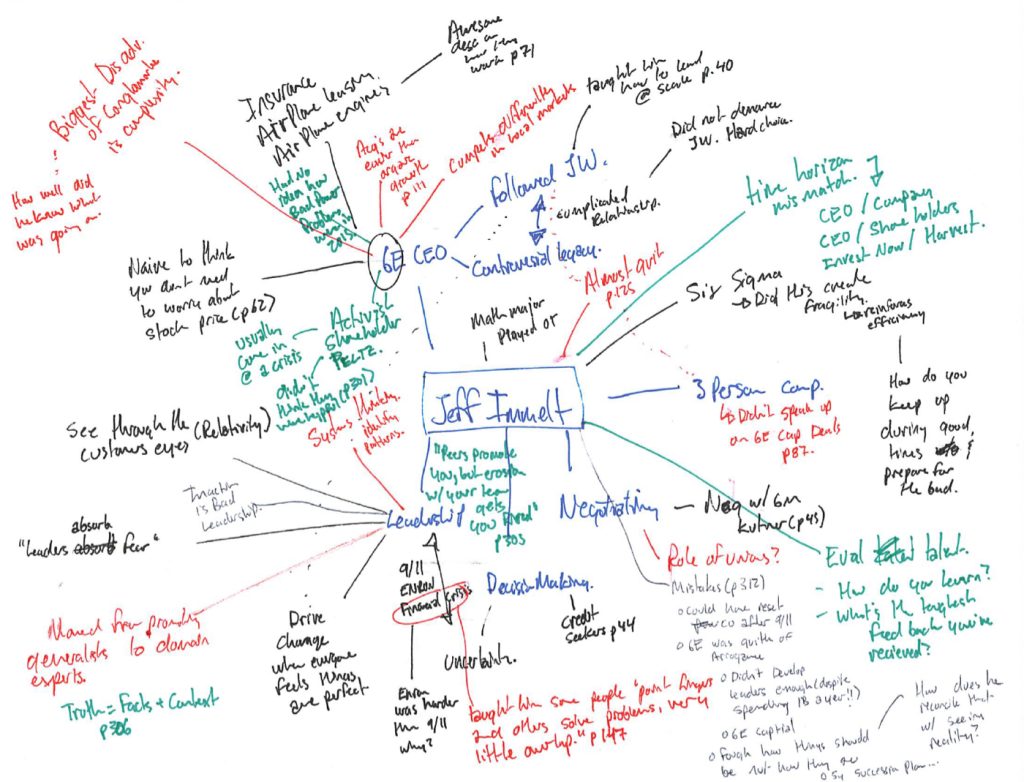The single biggest change you can make to get more out of your reading is the blank sheet method of note-taking. It took me years to develop this system, which will 10x your comprehension.
I don’t say that lightly. I’ve tested it on thousands of people.
The blank sheet method primes your brain for what you’re about to read and shows you what you’re learning.
Here’s how it works:
- Before you start reading a new book, take out a blank sheet of paper. Write down what you know about the book/subject you’re about to read — a mind map.
- After you finish a reading session, spend a few minutes adding to the map with a different color pen.
- Before you start your next reading session, review the page.
- When you’re done reading, put these ‘blank sheets’ into a binder that you periodically review.

Why does it work?
The blank sheet method primes your brain for what you’re about to read, offers structure, and reinforces that you’re learning.
When you first start with a blank sheet, you’re forced to search your memory and put on paper what you know (or what you think you know) about a subject. As you read, you literally see the growth.
Not only will you add new knowledge, but equally valuable, you’ll remove things you thought you knew that turned out not to be so.
Reviewing what you know about a subject, as well as what you have already learned before a reading session, not only improves memory and recall but helps layer and connect ideas.
Most of the early connections come from putting the authors’ raw material onto your foundation. If you don’t know anything about the subject before you start, don’t worry. You can borrow the scaffolding in the book to get you started.
As your fluency in a subject grows, you’ll start connecting ideas across disciplines, disagreeing with authors about specific points, and even developing your own ideas.
This final step is essential for establishing deep fluency and connecting ideas across disciplines. When you finish the book, put the page into a binder. Review the binder every few months. Spaced repetition offers exponential returns for very little additional effort.
